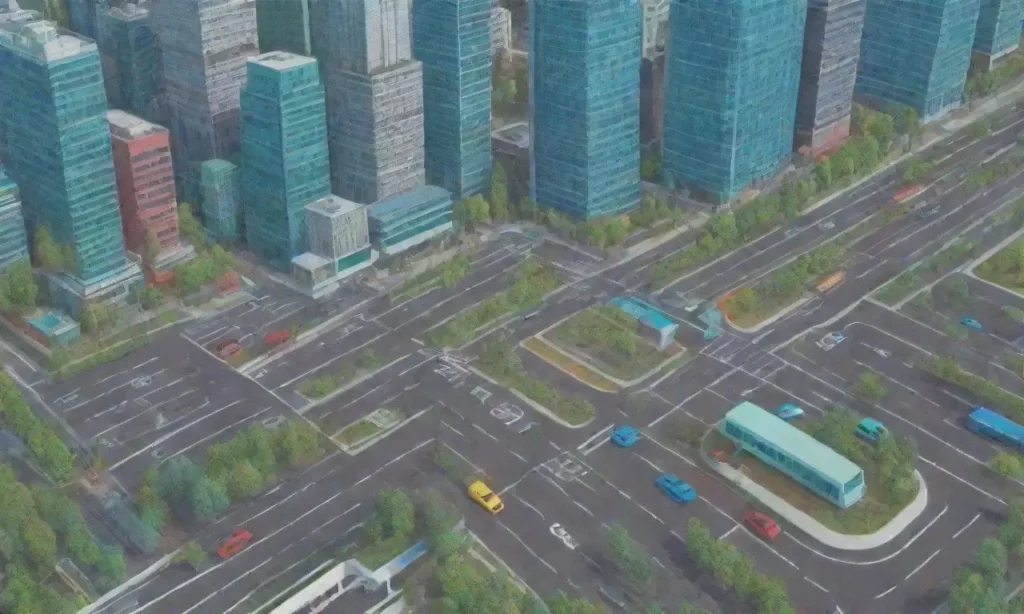
The Intersection of AI and Autonomous Vehicles in Urban Planning

Introduction
As cities continue to evolve and populations grow, urban planning faces increasing challenges in accommodating the demands of modern society. The rise of Artificial Intelligence (AI) and autonomous vehicles (AVs) plays a significant role in shaping the future of urban environments. These technological advancements promise enhanced safety, efficiency, and sustainability, but also bring forth ethical debates and regulatory considerations that planners must navigate.
In this article, we will explore the implications of integrating AI and autonomous vehicles into urban planning. We will examine how these technologies can improve the accessibility and functionality of urban areas, the potential challenges they pose, and the transformative possibilities they hold for future city designs.
The Role of AI in Urban Planning
AI has begun to infiltrate many sectors, and urban planning is no exception. Planners can leverage AI algorithms to analyze vast amounts of data and draw insights that were previously unattainable. By processing data collected from sensors, traffic cameras, and even social media, AI can provide planners with a clearer picture of current urban dynamics, traffic patterns, and community needs.
One of the most significant advantages of using AI in urban planning is its ability to conduct predictive analysis. This technology can model various urban scenarios, helping planners anticipate how changes, such as population growth or the introduction of new transportation infrastructure, may affect a city's traffic flow, land use, and overall livability. With predictive modeling, planners can make data-driven decisions that maximize public welfare and environmental sustainability.
Moreover, AI can enhance citizen engagement through the use of chatbots and virtual reality spaces, where residents can visualize proposed changes and provide real-time feedback. This fosters a collaborative approach to urban development, enabling planners to tailor projects according to community needs and preferences. Participatory design becomes more feasible when citizens are empowered to interact with planning processes actively.
Autonomous Vehicles: A Game Changer for Urban Mobility
The potential impact of autonomous vehicles on urban mobility cannot be overstated. AV technology promises to revolutionize transportation in cities by minimizing traffic congestion, reducing emissions, and improving road safety. As AVs have the ability to communicate with each other and traffic infrastructure, they can optimize routes and reduce waiting times, effectively eliminating some of the inefficiencies of human-driven vehicles.
In urban environments, AVs could lead to the removal of private car ownership. If personal vehicles become less necessary, cities can repurpose previously allocated parking spaces into green spaces, bike lanes, or pedestrian zones. This shift in land use not only enhances urban aesthetics but also promotes healthier lifestyles and reduces urban heat effects caused by paved surfaces. Subsequently, cities can emerge that prioritize pedestrians and cyclists over automobiles, manifesting a new urban ethos.
Furthermore, autonomous vehicles can address the needs of diverse populations. For example, they can provide mobility solutions for elderly individuals or persons with disabilities who may have difficulty accessing public transport options. By integrating AVs into the public transit system, urban planners can create a more inclusive transportation network, ensuring that all citizens have access to essential services and local amenities.
Challenges and Ethical Considerations

While the benefits of integrating AI and autonomous vehicles into urban planning are significant, several challenges and ethical debates must be addressed. One major concern is the equity of access. As AV technology advances, there is a risk that it could widen the gap between affluent communities that can afford the latest transport innovations and underserved areas that may continue to rely on outdated public transportation. It is crucial for urban planners to consider equitable solutions that ensure all neighborhoods have access to the benefits of AI and AVs.
Another challenge lies in data privacy and security. The deployment of AI and autonomous vehicles involves the collection and analysis of massive amounts of data, often including sensitive information about individuals' movements and behaviors. Ensuring that this data is handled securely and ethically is of paramount importance, as is establishing appropriate regulations that protect citizens' privacy without stifling innovation.
Moreover, the integration of AVs raises questions about liability in the event of accidents. As autonomous vehicles become more common, determining fault in crashes involving AI-driven vehicles presents legal complexities that have yet to be resolved. Urban planners will need to work closely with legal experts, policymakers, and ethicists to create frameworks that address these liabilities while also considering public safety.
The Integration of AI and AVs in Urban Infrastructure
The effectiveness of deploying AI and autonomous vehicles in urban environments largely depends on the underlying infrastructure. Cities may need to invest in upgrading their networks with sensors, connected traffic lights, and dedicated AV lanes to facilitate the smooth integration of these technologies. This change calls for comprehensive planning and collaboration between various stakeholders.
Moreover, the principles of smart cities come into play. By integrating AI with other technologies, cities can create feedback loops where data informs real-time adjustments to traffic flow, energy efficiency, and urban safety. For instance, if an AV identifies a traffic jam, it can share information with nearby vehicles and suggest alternative routes to help reduce congestion. This interconnected system can lead to a more fluid and responsive urban environment.
In addition, AI can also assist in optimizing urban energy use. By integrating AVs into smart grids, cities can analyze traffic patterns to predict energy demands for charging stations. This can ensure that EV infrastructure is deployed where it is most needed when demand peaks, thereby promoting a cleaner energy future.
The Future of Urban Design: Implications for Planners
The implications of integrating AI and autonomous vehicles into urban design are profound. Planners will need to rethink traditional models of urban space, moving towards more adaptive designs that embrace innovative technologies. Urban environments will likely evolve into more dynamic spaces that prioritize flexibility, accessibility, and sustainability.
This future vision encompasses not only the physical structure of cities but also the social fabric that weaves communities together. The advent of AI and AVs should catalyze a shift towards eco-friendly urban planning practices. This includes incorporating green infrastructure that reduces the urban heat island effect, enhancing biodiversity, and creating environments that provide both aesthetic pleasure and community value.
Moreover, the way we relate to urban spaces will transform as AV technology becomes commonplace. Changes in commuting patterns and residential location choices are anticipated. As AVs can operate independently, people may choose to live farther from their workplaces, resulting in a shift in traditional urban settings. Proper planning and development strategies will need to adapt to account for these new patterns of residential location and transport behavior.
Conclusion
The intersection of AI and autonomous vehicles represents a groundbreaking opportunity for reshaping urban planning. By harnessing the power of predictive algorithms and innovative transportation solutions, planners can create cities that are safer, more efficient, and equitable. Yet, these advancements come with their set of challenges that must be carefully navigated — issues of accessibility, data privacy, and liability pose questions that require thoughtful deliberation.
Looking forward, urban planners must embrace a holistic approach that integrates these technologies into the existing urban framework while working collaboratively with communities to ensure equitable outcomes. As we continue to explore the potentials of AI and AVs in urban planning, it is imperative to remain mindful of the ethical and social implications that accompany these innovations.
As cities transition into the future, the role of human-centered design in urban planning remains critical. By focusing on the needs and values of the populations they serve, planners can ensure that the merging of AI and autonomous vehicles enhances the urban experience rather than exacerbating existing divides. In this ever-evolving landscape, the future of urban life holds tremendous promise, contingent upon the choices we make today.
If you want to read more articles similar to The Intersection of AI and Autonomous Vehicles in Urban Planning, you can visit the Autonomous Vehicles category.



You Must Read